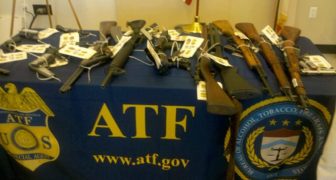This is a guest post by Scott Sylvester
Doing a Pre-Flight CCW Check
If you carry a (semi-auto) handgun on a daily basis, you need to remember that it is a finely tuned machine that requires a certain amount of maintenance and care to function. We want to make sure we take proper care of our machine because the moment we need it… it has to work! Since we have busy lives and some of you (admit it) do not give your handgun a thorough cleaning each time you shoot it, make time in your daily routine for a quick operational check. A quick two minute assessment could save your life.
First, start with a safe and empty weapon. Perform a mechanical, visual and physical check of your handgun to make sure it is unloaded. Grab a cleaning cloth and a couple of Q-tips as well. Once you have a safe and empty weapon, close the slide and visually inspect the exterior of the gun. If you carry concealed wipe the dust bunnies and fuzzy stuff off, especially around the hammer, safety and any recessed portions. Overtime, dust binds with lubricant and can cause a malfunction or stoppage.
Now, lock the slide open and check the rails. There should be a light film of lubricant visible. If your gun is bone dry, you should stop at this point, break it down and properly add lubricant to the recommended areas. If you are unsure where lubricant goes and how much, consult your owner’s manual.Next look at the recoils spring and barrel to make sure they are seated properly and the guide rod is intact. Now that some manufacturers are using plastic for guide rods, you need to pay attention. Plastic cannot withstand the same punishment as steel. Look down the barrel and also make sure it is free from obstructions. You don’t want any debris or dust bunnies in the barrel either. Give a quick check of the feed ramp and extractor to make sure both parts are intact. Finally look down into the magazine well and make sure that area is also clean and free from obstructions. Now you can begin a function check.
A function check is a quick easy way to assess the features of your handgun to see if they are working. Depending on the model of handgun you have, not all of these will apply, but follow along and tailor the function check to fit the needs of your particular semi auto handgun.
Close the slide and de-cock or engage any safety features associated with your handgun. Once the safety is engaged, pull the trigger and make sure the gun does not dry fire with the safety mechanisms engaged.
Starting from your carry position- striker fired, hammer down or cocked and locked, check the trigger pull and listen for the audible striker functioning. For guns with a hammer, watch the hammer fall and on both types, keep the trigger buried to the rear after the first press. Now, keeping the trigger buried, cycle the slide which should reset the striker or cock the hammer into single action. Now, slowly let out on the trigger and listen for the reset. If you have a handgun with a hammer, now press the trigger a second time to test the single action trigger pull.
Now that you have a ready and functioning handgun, holster it and grab a magazine. Just like the handgun, give it a visual inspection and make sure it is also clean and free from dust bunnies and debris. Make sure it does not have an excess of lubricant on the magazine. I have seen a few well intentioned handgun owners over lubricate their firearm causing the excess oil to get onto the magazine and gum it up. Now we can check the feed spring. I always like to pop a couple of rounds off the top of the magazine to make sure they slide easily past the feed lips and the spring tension is sufficient enough to push the next round into place instantaneously. Now, replace the couple of rounds you pushed out and make sure the feed lips retain the rounds properly.
Now, insert the magazine well into the firearm and give it a tap and tug to make sure it is seated properly. If the magazine comes out without depressing the release, you need to have your handgun serviced.Draw your handgun (point it in a safe direction) and charge it. Engage any safety features and safely re-holster the handgun with your finger outside the trigger guard. Now press the magazine release and check to make sure it also functions properly. You should be able to pull the magazine clear of the handgun without it reengaging, catching or feeling any unnecessary friction. Now, reseat the second round that was in the magazine (now the top round) and top off the magazine with an additional round so it is at full capacity. Re-insert it and again listen for the audible click to tell you the magazine is seated firmly. Give it a tug and you are ready to go!
If you carry a spare magazine (which I highly recommend), perform the same check and place it in your magazine carrier. Lastly, if you carry a holster with any type of retention device, make sure it is working properly as well.
While the narrative is long, this quick pre-flight check takes seconds and will give you comfort knowing your tool is ready when you need it.
Till next time, be safe and remember: Your mind is the weapon, everything else is a tool!
For more information about One Weapon Any Tool or for firearms training in Northern California visit our web site at: www.oneweaponanytool.com or find us on Facebook!
Stay safeScott S


Speak Your Mind